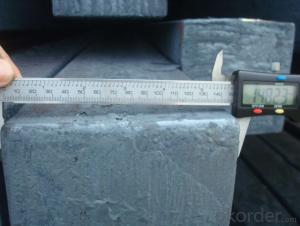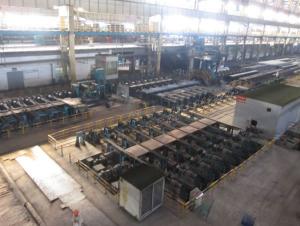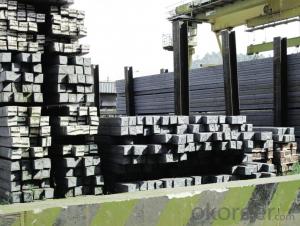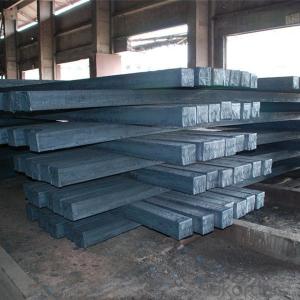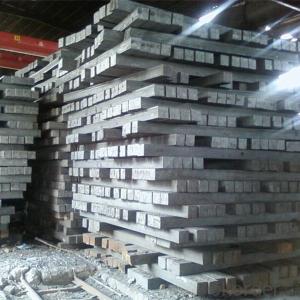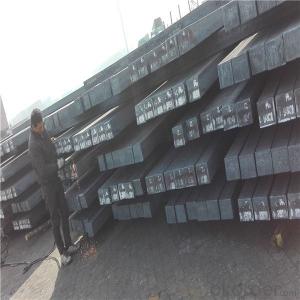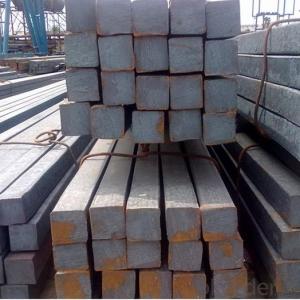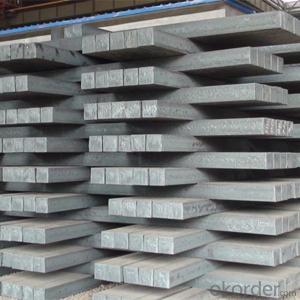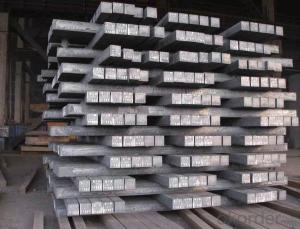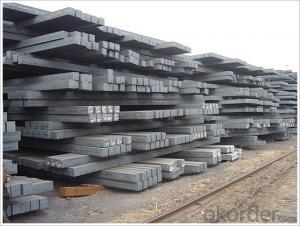Prime Mild Steel Bar Carbon Steel Billets from Manufactures China
- Loading Port:
- Tianjin
- Payment Terms:
- TT OR LC
- Min Order Qty:
- 1000 m.t.
- Supply Capability:
- 16210 m.t./month
OKorder Service Pledge
OKorder Financial Service
You Might Also Like
Specification
Billets, or ingots (as they sometimes referred to), are not of practical use until they have been formed
into more functional shapes and sizes. While they have already been put in the furnace, they still require
a series of shaping and molding procedures such as hot and cold working, milling and cutting before they
are sold in hardware stores, or used for different applications. The unformed billets, however, can be used
in striking currency such as coins and as reserves, similar to gold bars.
Gade:
Standard | C(%) | Mn(%) | S(%) | P(%) | Si(%) |
Q195 | ≤0.12 | ≤0.50 | ≤0.040 | ≤0.035 | ≤0.30 |
Q235 | ≤0.20 | ≤1.40 | ≤0.045 | ≤0.045 | ≤0.35 |
Q275 | ≤0.22 | ≤1.50 | ≤0.045 | ≤0.045 | ≤0.35 |
20MnSi | 0.17-0.25 | 1.2-1.6 | ≤ 0.050 | ≤ 0.050 | 0.40-0.80 |
3SP | 0.14-0.22 | 0.40-0.85 | ≤ 0.050 | ≤ 0.040 | 0.05-0.15 |
5SP | 0.28-0.37 | 0.50-1.00 | ≤ 0.050 | ≤ 0.040 | 0.15-0.30 |
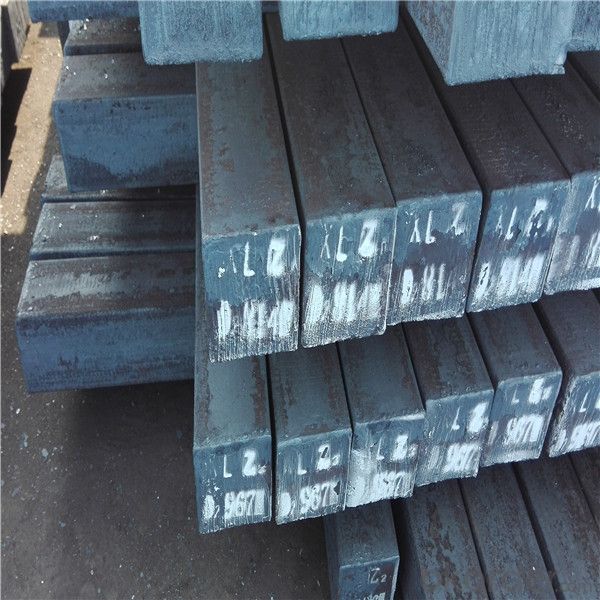
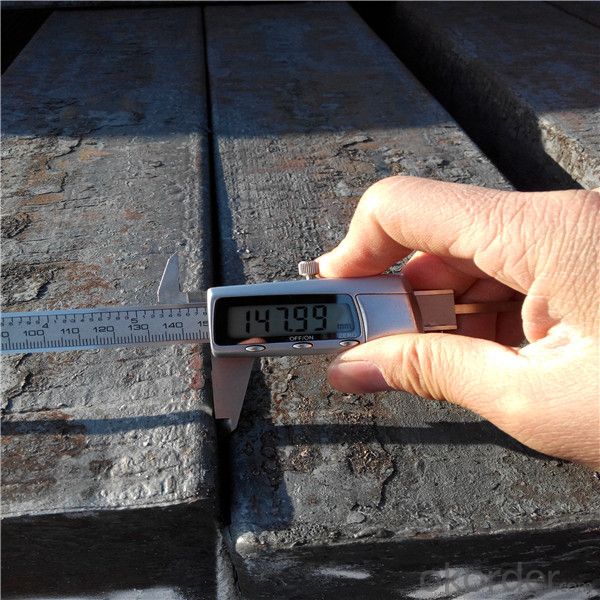
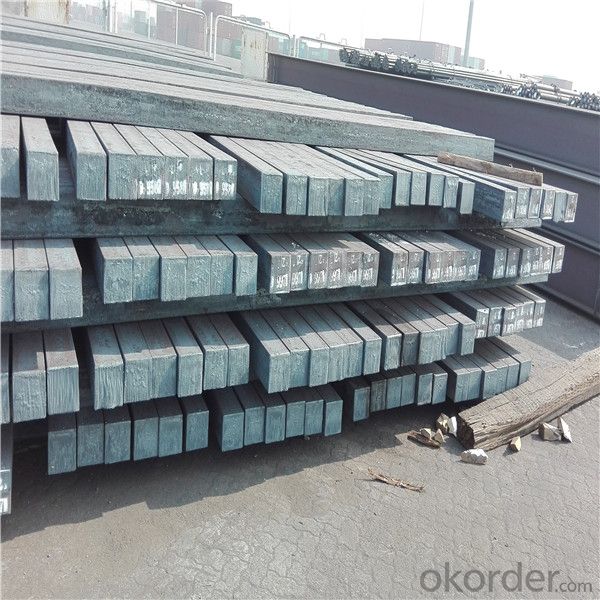
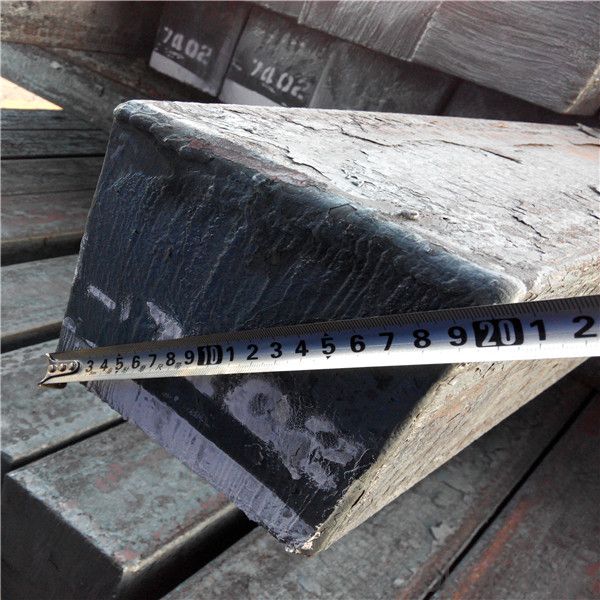
Our service :
We have a plant and professional team to provide our best service, from the start of production until the
loading into the vessel, we have a complete quality follow up procedure, to assure our products arrives to the customer with satisfaction. Welcome new and old customers
to contact us for future business relationships! We will give you a surpise price.
Packing :
Within 30 days
1.Standard export package
2.In bundles with steel strips
3.As the requirements of the customers
FAQ:
Q: What is payment terms?
A: FOB 30% T/T IN ADVANCE AS DEPOSIT AND 70% T/T BEFORE SHIPMENT
CIF and CFR 30% T/T IN ADVANCE AS DEPOSIT AND 70% T/T AS THE COPY OF B/L OR L/C AT SIGHT
Q:How to guarantee the quality of the products?
A:We have established the international advanced quality management system,every link from raw material
to final product we have strict quality test;We resolutely put an end to unqualified products flowing into the market.
At the same time, we will provide necessary follow-up service assurance.
Q:How long can we receive the product after purchase?
A :In the purchase of product within three working days, We will arrange the factory delivery as soon as possible.
The pecific time of receiving is related to the state and position of customers.
- Q: Is there an export duty? Or is there a tax refund?
- It's too broad. What kind of material (contains all kinds of metal components in order to confirm HS coding)?
- Q: How are steel billets cleaned before further processing?
- Prior to further processing, steel billets undergo a series of steps to eliminate impurities and contaminants. The initial step involves subjecting the billets to a high-pressure water jet to effectively remove loose scale and dirt from the surface. This water jetting process effectively eliminates most loose particles and prepares the surface for further cleaning. Following the initial water jetting, the billets are submerged in an acid bath. This acid bath can consist of a variety of chemicals, such as hydrochloric acid, sulfuric acid, or a combination of both. The purpose of the acid bath is to eliminate any remaining scale or oxide layers from the billets' surface. The acid reacts with these impurities, dissolving them and leaving behind a clean surface. Once the acid cleaning is completed, the billets undergo a thorough rinsing with water to ensure the removal of any traces of acid. This rinsing process is vital to prevent any acid residue from affecting the final product's quality. After rinsing, the billets are dried either using hot air or in a furnace to eliminate any moisture. This drying process is essential in preventing surface rusting or corrosion on the billets. Overall, the cleaning of steel billets prior to further processing is a critical step in guaranteeing the quality and integrity of the final product. It effectively eliminates impurities, scale, and oxide layers from the surface, resulting in a clean and uniform surface for subsequent processing operations.
- Q: What is the role of steel billets in the manufacturing of automotive frames?
- Steel billets play a critical role in the manufacturing of automotive frames. These billets are essentially semi-finished steel products that are used as raw material in various industrial processes. In the automotive industry, steel billets are transformed into automotive frames through a series of manufacturing steps. First and foremost, steel billets are chosen for their high strength and durability. Their composition and mechanical properties make them ideal for supporting the weight and structural integrity of automotive frames. These frames need to withstand various loads, shocks, and vibrations, and steel billets provide the necessary strength and stability. The manufacturing process begins with heating the steel billets to a specific temperature, known as the forging temperature. At this temperature, the billets become malleable and can be easily shaped and manipulated. They are then placed into a forging press or machine, where immense pressure is applied to transform them into the desired shape of the automotive frame. After forging, the frames are usually subjected to heat treatment to enhance their mechanical properties and improve their performance. This process involves heating the frames to a specific temperature and then cooling them rapidly or slowly to achieve the desired hardness, strength, and toughness. Heat treatment also helps in relieving internal stresses and improving the overall structural integrity of the automotive frames. Once the frames are forged and heat-treated, they undergo various finishing processes, such as machining, welding, and surface treatment. Machining involves removing excess material and refining the dimensions of the frame to meet precise specifications. Welding is used to join different components of the frame together, ensuring their structural integrity. Surface treatments, such as painting or galvanizing, are applied to protect the frames from corrosion and enhance their appearance. In summary, steel billets are essential in the manufacturing of automotive frames due to their high strength, durability, and malleability. They provide the foundation for creating sturdy and reliable structures that can withstand the demands of the automotive industry. Through forging, heat treatment, and finishing processes, steel billets are transformed into automotive frames that form the backbone of vehicles, ensuring their safety and performance on the road.
- Q: What are the different methods of steel billet surface cleaning?
- There are several methods of steel billet surface cleaning, each with its own advantages and disadvantages. Some of the common methods include: 1. Shot Blasting: This method involves shooting small metallic or non-metallic particles at high velocity onto the surface of the billet. The impact of these particles removes any rust, scale, or surface contaminants. Shot blasting is an effective method for cleaning large surfaces quickly, but it can cause surface roughness and may not be suitable for all types of steel. 2. Acid Pickling: Acid pickling involves immersing the steel billet in an acid solution, typically hydrochloric or sulfuric acid, to remove scale and rust. The acid reacts with the surface contaminants, dissolving them and leaving a clean surface. Acid pickling is effective in removing stubborn scale and rust, but it requires careful handling of the corrosive acids and proper disposal of the waste. 3. Mechanical Cleaning: Mechanical cleaning methods involve using abrasive tools or brushes to physically scrub the surface of the billet. This can be done manually or using machinery. Mechanical cleaning is effective in removing loose contaminants and scale, but it may not be suitable for heavily rusted or stubbornly adhered contaminants. 4. High-Pressure Water Jetting: This method uses high-pressure water jets to clean the surface of the billet. The force of the water removes scale, rust, and other contaminants. High-pressure water jetting is environmentally friendly as it does not involve the use of chemicals, but it may not be as effective in removing heavy scale or rust. 5. Ultrasonic Cleaning: Ultrasonic cleaning involves immersing the steel billet in a tank filled with a cleaning solution and subjecting it to high-frequency ultrasonic vibrations. The vibrations create tiny bubbles in the cleaning solution, which implode on the surface of the billet, effectively removing contaminants. Ultrasonic cleaning is effective in removing even microscopic particles and can reach complex geometries, but it may not be suitable for large-scale cleaning operations. Each of these methods has its own strengths and limitations, and the choice of method depends on factors such as the type and condition of the surface contaminants, the time and cost constraints, and the desired surface finish.
- Q: How are steel billets used in the manufacturing of springs?
- Steel billets are essential in the manufacturing of springs as they provide the raw material needed for the production process. Springs are typically made from high-quality steel, which is forged into billets. The first step in using steel billets for springs involves heating the billets to a specific temperature to make them malleable. Once the billets are heated, they are then shaped into the desired form. This can be done through various methods, including hot rolling or extrusion. After shaping, the billets are further processed to enhance their mechanical properties. This may involve heat treatment processes such as quenching and tempering, which improve the hardness, strength, and durability of the steel. The specific heat treatment process used depends on the desired characteristics of the spring. Once the billets have been shaped and heat-treated, they are ready to be transformed into springs. The billets are typically cut into smaller lengths, and then further machined or formed into the specific shape and size required for the spring. This can be done through various methods, such as coiling, bending, or stamping. The final step in the manufacturing process involves finishing the springs. This may include grinding or polishing to ensure a smooth surface and remove any imperfections. Additionally, coatings or platings may be applied to enhance the corrosion resistance or aesthetic appearance of the springs. In summary, steel billets are integral to the manufacturing of springs. They serve as the raw material, undergo various shaping and heat treatment processes, and are ultimately transformed into the desired form of the spring. The use of high-quality steel billets ensures that the resulting springs possess the necessary strength, durability, and performance characteristics required for their intended applications.
- Q: What are the potential applications of steel billets in the food and beverage industry?
- Steel billets have several potential applications in the food and beverage industry. They are commonly used to manufacture various types of food processing equipment, such as mixers, blenders, and conveyors, due to their strength and durability. Additionally, steel billets can be used to create storage and transportation containers for food products, ensuring their safety and freshness. The corrosion resistance of stainless steel billets makes them suitable for applications requiring hygiene, such as food preparation surfaces and utensils. Overall, steel billets offer a wide range of possibilities for enhancing efficiency and maintaining high standards of cleanliness in the food and beverage industry.
- Q: What is a steel billet?
- A steel billet is a semi-finished product in the form of a rectangular or square shape made from molten steel that has been solidified and cooled. It serves as a raw material for various steel products and is further processed through rolling or forging to be transformed into bars, rods, or other desired shapes.
- Q: Difference between billet, slab and billet
- Steel billet is a product made by steel-making furnace by casting. The billet can be divided into two kinds from the manufacturing process, mould blank and continuous casting billet. At present, the casting process has been basically eliminated. The classification is mainly divided into two kinds: slab: large cross section, high ratio, mainly used for rolling plate. Billet: cross section width, height equal, or difference is not big, mainly used for rolling steel, wire. Use billet is steel, through processing can be used as mechanical parts, forgings, processing all kinds of steel, steel, Q345B, channel steel, wire is the role of billet. Billet is used for the production of semi-finished steel products, generally can not be used directly for society. Billet and steel are strictly divided into standard, and can not be determined by the final product of the enterprise, but should be carried out according to the uniform standard of the whole society. Usually, billet and steel is relatively easy to distinguish, but for some billets, with the same specification and the same purpose (such as rolling and steel tube), whether for other industries by use, whether through steel processing process, whether after finishing mill processing to distinguish. Continuous cast steel square and rectangular billets are mainly made of plain carbon steel, low carbon and low silicon cold rolled material, high quality carbon structural steel, low alloy high strength steel, special steel and so on.
- Q: What is the typical length of a steel billet?
- The typical length of a steel billet can vary depending on several factors such as the intended use, production process, and specific industry standards. However, in general, steel billets are commonly produced in lengths ranging from 2 to 12 meters (6.5 to 40 feet). These lengths are commonly used for further processing, such as hot rolling or forging, to create various steel products like bars, rods, beams, or other structural components. It is important to note that the actual length of a steel billet can be tailored to meet the specific requirements of a particular application or customer order.
- Q: What are the different surface defects that can occur in steel billets?
- Some of the different surface defects that can occur in steel billets include cracks, scales, pitting, scratches, and surface irregularities.
Send your message to us
Prime Mild Steel Bar Carbon Steel Billets from Manufactures China
- Loading Port:
- Tianjin
- Payment Terms:
- TT OR LC
- Min Order Qty:
- 1000 m.t.
- Supply Capability:
- 16210 m.t./month
OKorder Service Pledge
OKorder Financial Service
Similar products
Hot products
Hot Searches
Related keywords







